Search Engine Results Pages have transformed dramatically. The traditional ten blue links no longer dominate the first page of Google. Instead, Featured Snippets, image carousels, and other SERP features capture user attention above the fold, fundamentally changing how agencies approach SEO strategy.
Featured Snippets represent the ultimate SEO prize—position zero visibility that can dramatically increase organic traffic and brand authority. Yet many agencies struggle to secure these coveted spots consistently. The complexity of snippet optimization requires specialized expertise, advanced tools, and ongoing monitoring that often stretches internal resources thin.
This challenge has led more agencies to explore white label SEO outsourcing partnerships. These collaborations provide access to specialized snippet optimization expertise without the overhead of hiring additional in-house talent. A strategic white label SEO company can help agencies systematically target and win Featured Snippets across multiple client accounts.
This comprehensive guide explores how white label SEO partners can amplify your snippet optimization efforts, the proven strategies they employ, and actionable steps to integrate snippet targeting into your agency's service offerings.
What Are Featured Snippets?
Featured Snippets are specially formatted search results that appear at the top of Google's organic results, providing direct answers to user queries. These "position zero" results extract content from web pages and display it prominently, often including the source page title and URL.
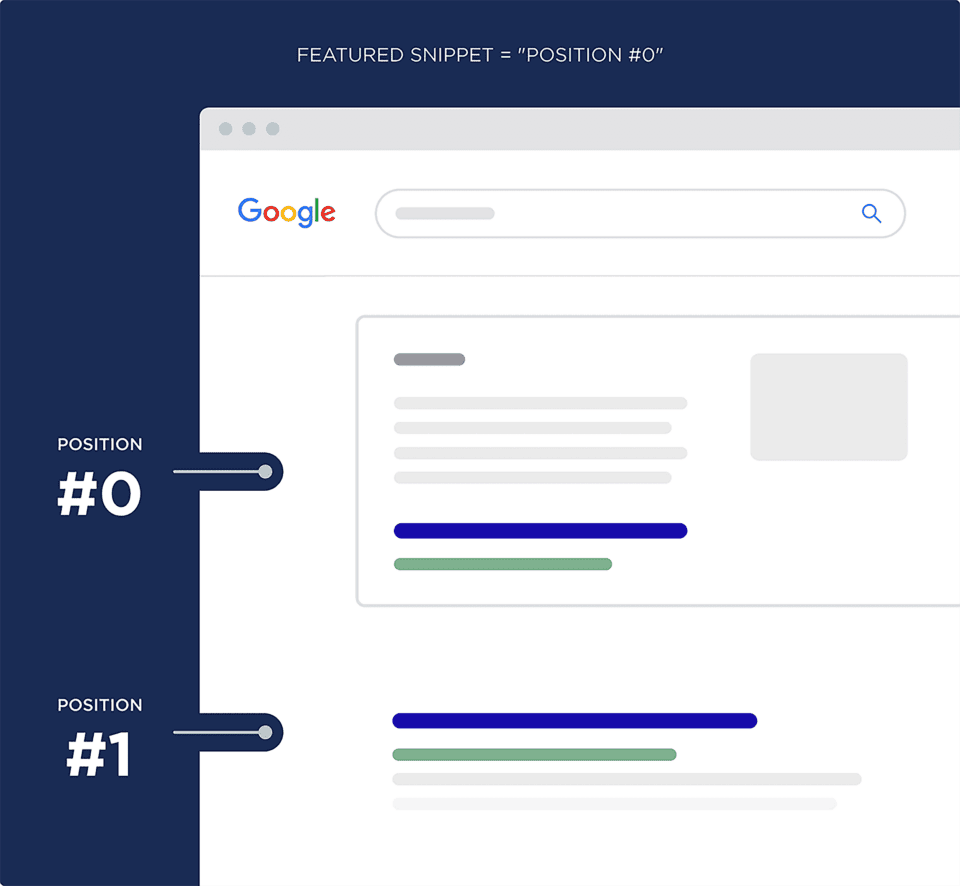
Image Source: Backlinko
Recent data reveals that Featured Snippets appear for approximately 19.2% of all search queries, representing massive visibility opportunities across virtually every industry. More significantly, Featured Snippets can increase click-through rates by 35% compared to standard organic results, according to Search Engine Land data.
Securing Featured Snippets delivers substantial value for both agencies and clients. The prominent placement builds immediate trust and authority, positioning brands as subject matter experts. Users perceive snippet-featured content as more credible and authoritative than standard search results.
The Value of Featured Snippets for Agencies and Clients
Optimized Featured Snippets provide measurable advantages that directly impact client success metrics and agency growth potential.
- Trust and Authority Boost: Snippet placement immediately elevates brand perception. Users associate Featured Snippet content with expertise and reliability, creating powerful first impressions that traditional organic rankings cannot match.
- Click-Through Rate Advantage: HubSpot research indicates that Featured Snippets generate click-through rates up to 35% higher than comparable first-position organic results. This traffic increase translates directly into more leads, conversions, and revenue for clients.
- Mobile and Voice Search Impact: Featured Snippets power voice search responses across smart speakers, mobile assistants, and in-car systems. As voice queries continue growing, snippet optimization becomes essential for capturing this expanding search behavior.
- Competitive Differentiator: Snippet visibility sets agencies apart in crowded markets. Clients recognize the strategic value of position zero rankings, making snippet optimization a powerful service differentiator during new business pitches.
Further Reading: How to Capture the Coveted Position Zero in Search Results in 2022
The Complexity Behind Securing Featured Snippets
Featured snippets appear deceptively simple on the surface, but the underlying optimization requirements involve multiple technical and strategic considerations that challenge even experienced SEO professionals.
How Google Selects Snippet-Worthy Content?
Google's featured snippet selection process involves a sophisticated algorithmic evaluation across several key factors. Understanding these elements is crucial for developing effective optimization strategies.
- Keyword nuances play a fundamental role in snippet selection. Google prioritizes content that directly addresses specific search queries with precise language matching.
- Query intent alignment determines whether content qualifies for snippet consideration.
- Content structure and formatting significantly influence snippet selection probability. Google's algorithm scans for specific HTML elements, including header tags, lists, tables, and structured data markup.
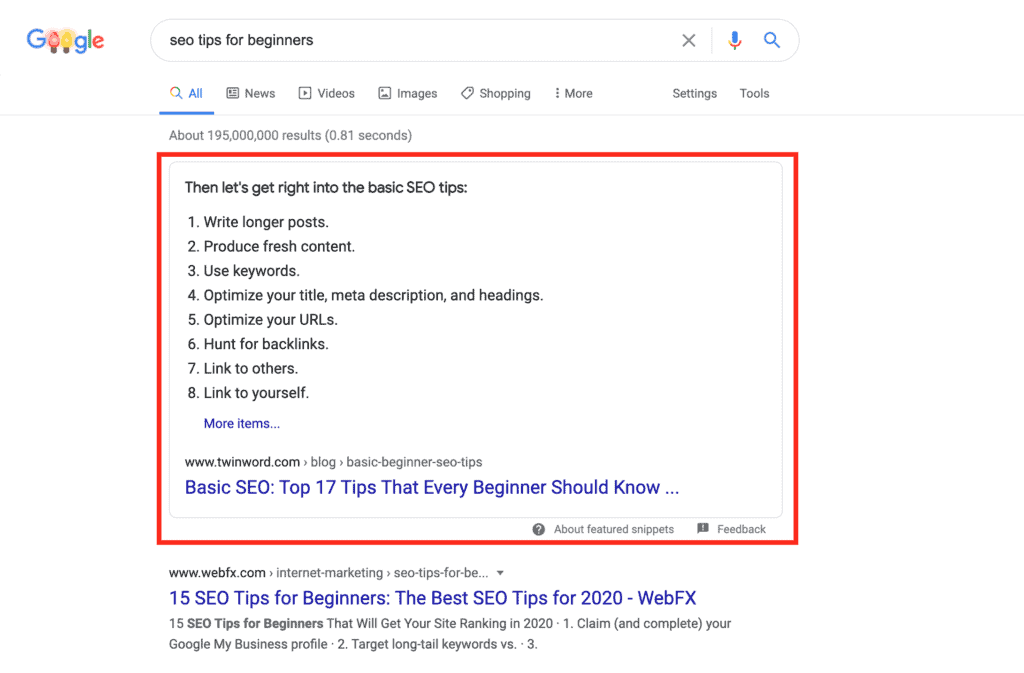
The algorithm also evaluates content freshness, domain authority, and user engagement signals when determining snippet eligibility. These factors create a complex optimization landscape that requires a systematic approach and ongoing monitoring.
Types of Snippets and Industry Applications
Different snippet formats serve specific search intents and perform better in certain industries. A white label SEO partner with experience across multiple verticals can identify optimal snippet types for each client's niche.
- Paragraph Snippets work exceptionally well for definition-based queries and explanatory content. Professional services, healthcare, and educational sectors frequently benefit from this format. These snippets typically extract 40-60 words that directly answer the user's question with clear, concise language.
- List Snippets excel for how-to queries, step-by-step processes, and ranking information. E-commerce, software, and service-based businesses see strong performance with numbered and bulleted list formats. These snippets can display up to 8 list items, making them valuable for comprehensive topic coverage.
- Table Snippets capture comparison queries, pricing information, and data-heavy content. Financial services, real estate, and B2B software companies particularly benefit from structured table formats that present information in organized columns and rows.
- Video Snippets increasingly dominate how-to and tutorial queries. Industries like fitness, cooking, technology, and DIY home improvement see substantial traffic from video snippet optimization. These require specific video SEO strategies beyond traditional text-based approaches.
- Double Featured Snippets appear when Google displays multiple snippet types for a single query. These represent premium opportunities but require advanced optimization techniques to capture both positions simultaneously.
- People Also Ask (PAA) boxes expand snippet opportunities by addressing related questions. Strategic PAA optimization can multiply snippet visibility and capture additional long-tail traffic variations.
Algorithm Changes and Competitive Hurdles
Featured snippet landscapes shift constantly due to algorithm updates and competitive actions. According to SEMrush research, featured snippet volatility averages 35% month-over-month, meaning more than one-third of snippets change regularly. This volatility creates ongoing optimization requirements that strain internal agency resources.
Algorithm updates frequently modify snippet selection criteria, content length requirements, and formatting preferences. The August 2023 helpful content update significantly impacted snippet rankings, prioritizing user-focused content over keyword-optimized pages. Agencies without dedicated algorithm monitoring systems struggle to adapt quickly to these changes.
Using White Label SEO to Win Featured Snippets: A Step-by-Step Strategy
1. Keyword Research and Intent Analysis
Effective snippet targeting begins with identifying queries that trigger Featured Snippets while aligning with the client's business objectives. White label SEO partners excel at this research phase by leveraging advanced tools and industry-specific knowledge.
Long-tail keywords often present the best snippet opportunities. These specific queries indicate clear user intent and face less competition than broad terms. White label providers analyze search patterns to identify high-probability snippet targets that align with client expertise areas.
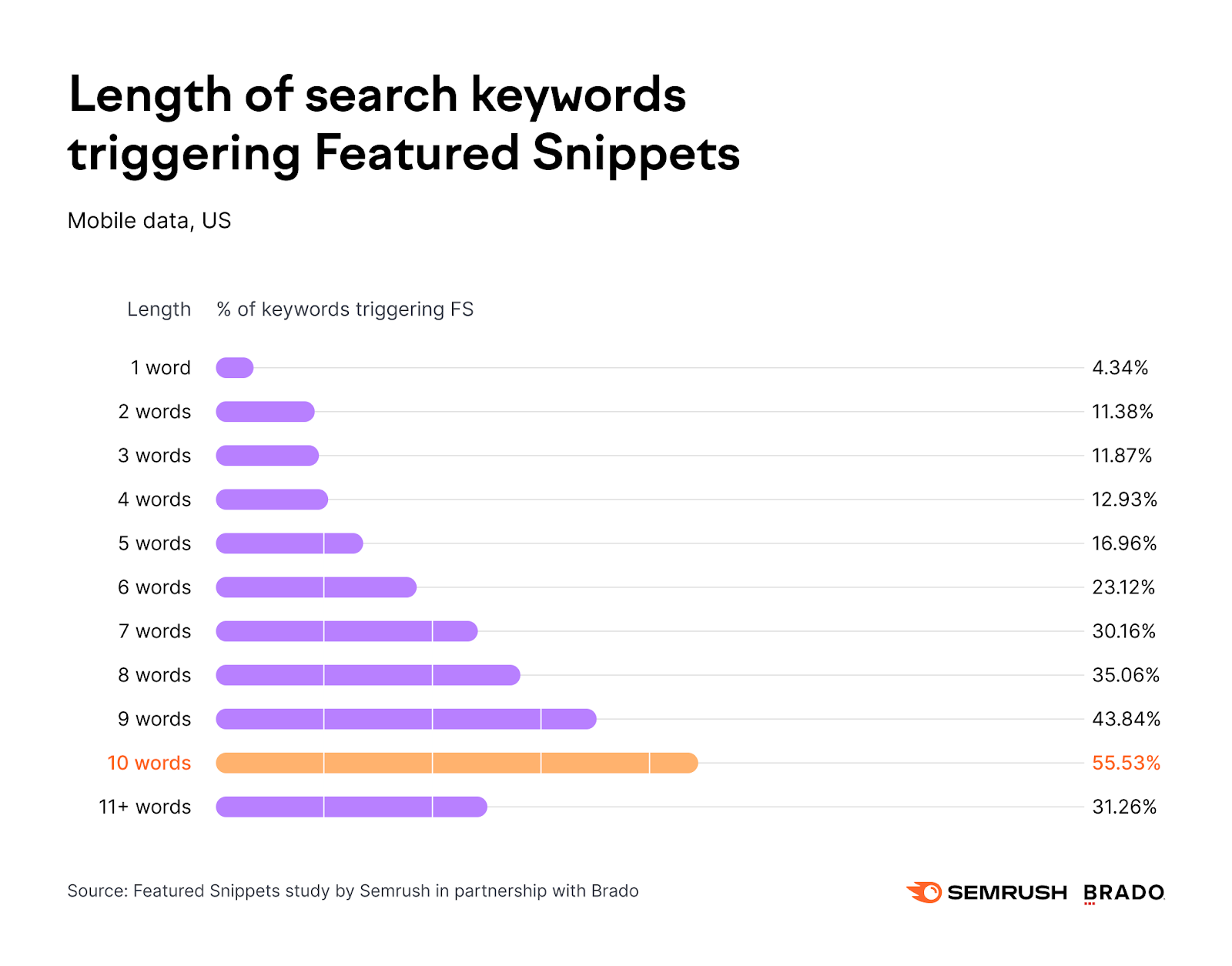
Image Source: Semrush
Industry-specific keyword analysis requires a deep understanding of how different sectors phrase questions and seek information. White label teams bring cross-industry experience that helps identify opportunities individual agencies might miss.
2. Structuring Content for Featured Snippets
Content structure directly impacts snippet eligibility. Google favors organized information that directly answers user queries.
Concise answer formatting works best for paragraph snippets. The optimal approach places the direct answer in the first 40-60 words, followed by supporting details and context. White label providers understand these formatting requirements and create content specifically structured for snippet capture.
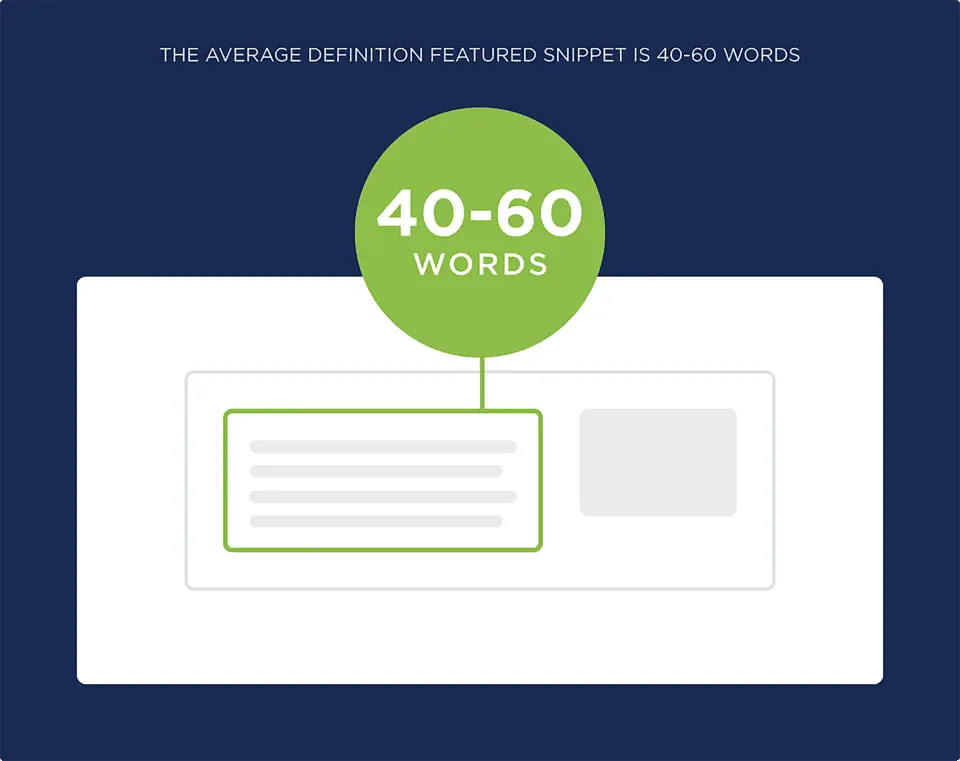
Image Source: Backlinko
Intent-matched content creation ensures alignment between user queries and content focus. White label teams analyze search intent behind target keywords, creating content that precisely addresses user needs rather than generic topic coverage.
List and table formatting require specific technical approaches that many agencies lack. White label providers have experience creating properly structured lists, comparison tables, and step-by-step guides that Google recognizes as snippet-worthy.
3. Schema Markup Integration
Structured data implementation significantly improves snippet eligibility across multiple categories.
FAQ schema markup helps content appear in Featured Snippets and People Also Ask sections. White label providers implement FAQ structured data that clearly identifies questions and answers, improving Google's ability to extract relevant content.
How-To schema markup benefits instructional content by providing clear step-by-step formatting that Google can easily parse for snippet display. This structured approach works particularly well for service-based businesses and educational content.
Review schema markup can help product and service pages appear in snippet formats that include ratings and review information, providing additional visibility and credibility signals.
4. Leveraging Data and Insights
Professional SEO tracking tools provide essential data for snippet optimization success. White label providers have access to enterprise-level platforms that individual agencies often cannot justify purchasing.
Identifying existing snippet opportunities requires systematic SERP analysis across target keywords. White label SEO agency use tools like SEMrush and Ahrefs to identify queries where clients rank on page one but lack snippet visibility, representing immediate optimization opportunities.
Monitoring SERP behavior over time reveals patterns in snippet volatility and competitive activity. This data informs optimization strategies and helps predict when defensive measures may be necessary to maintain snippet positions.
5. Metrics to Measure Snippet Success
For agencies and their white label SEO partners, measuring snippet success goes beyond bragging rights on rankings. It’s about tracking the right mix of visibility, engagement, and conversion metrics that prove tangible business impact. Here are some important metrics to track -
- Featured Snippet Acquisition Rate
- Featured Snippet CTR (Click-Through Rate)
- Traffic Lift from Snippet Queries
- Ranking Volatility in Snippet Queries
- Average Engagement Time on Snippet Landing Pages
- Bounce Rate for Snippet Traffic
- Goal/Conversion Rate from Snippet Visitors
- Query Intent Match Score
- Snippet Content Refresh Frequency
- Number of Snippet Types Won
6. Competitor Analysis
Understanding competitive snippet strategies enables agencies to develop superior approaches.
Reverse-engineering existing snippet holders reveals successful content structures, keyword targeting, and technical implementations. White label providers systematically analyze competitor snippet content to identify optimization opportunities.
Competitive monitoring alerts teams when competitors begin targeting existing client snippets, enabling proactive defensive optimization before positions are lost.
7. Enhancing With Rich Media
Multimedia content optimization extends snippet opportunities beyond text-based formats.
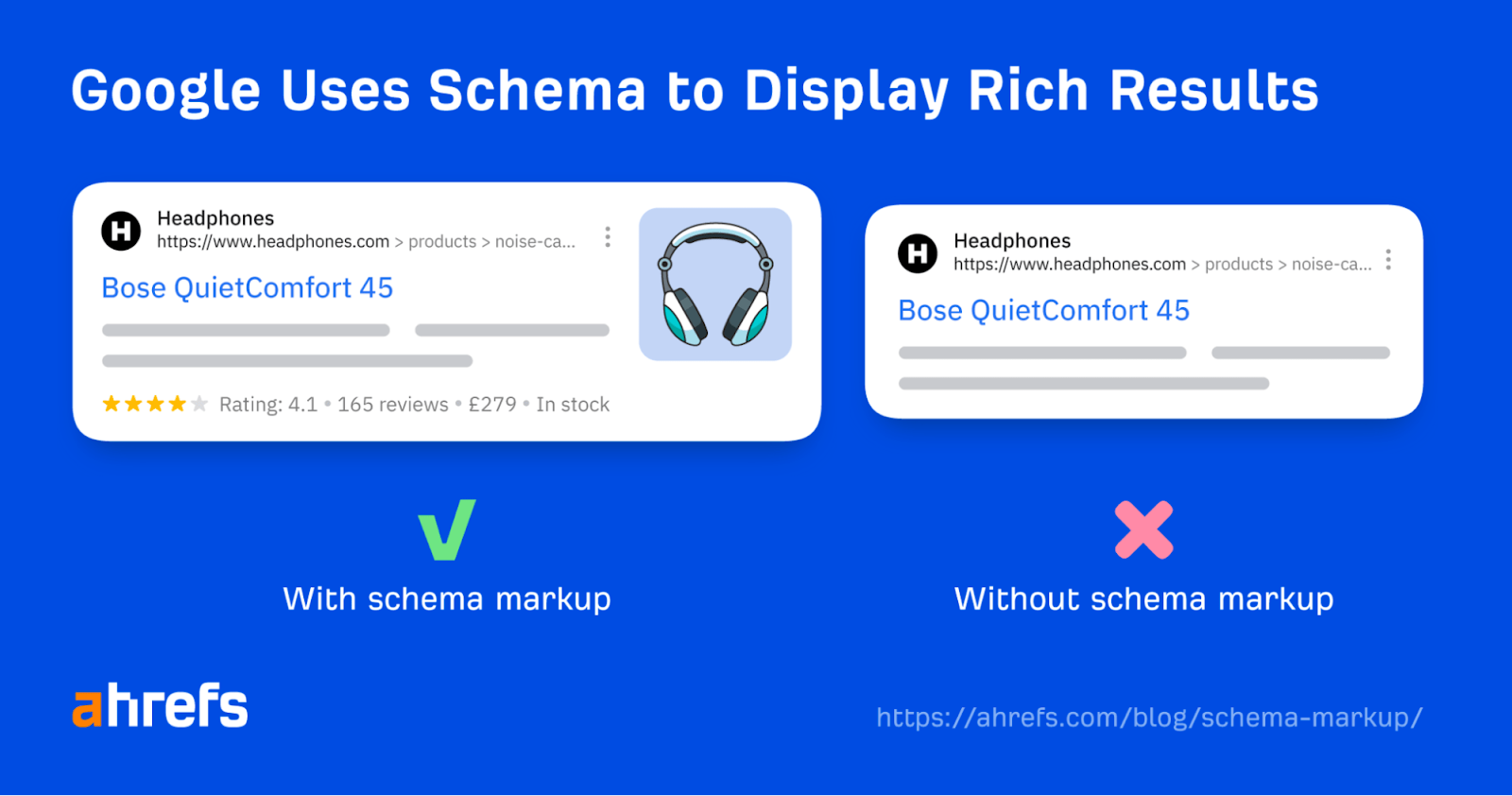
Image Source: Ahrefs
Image optimization for Featured Snippets requires specific technical approaches, including proper alt text, structured data, and contextual relevance. White label providers understand how to optimize images for snippet inclusion.
Video snippet optimization involves timestamp markup, transcript optimization, and content structure that encourages Google to feature video content in snippet formats.
Common Pitfalls to Avoid (and How White Label Providers Prevent Them)
Agencies frequently encounter specific obstacles when attempting snippet optimization without specialized expertise.
- Over-Optimizing and Triggering Penalties: Aggressive keyword stuffing or manipulative formatting can result in algorithm penalties that harm overall rankings. White label SEO partners understand Google's quality guidelines and implement sustainable optimization strategies that avoid these risks.
- Ignoring Mobile-First Snippet Formatting: Google prioritizes mobile-optimized content for snippet selection. Many agencies overlook mobile formatting requirements, reducing snippet eligibility. Experienced white label providers ensure all optimizations work seamlessly across devices.
- Neglecting Ongoing Snippet Monitoring: Snippet retention requires continuous monitoring and adjustment. Algorithm updates, competitor actions, and changing search patterns can displace successful snippets. White label teams provide systematic monitoring and rapid response capabilities.
- Forgetting Competitor Re-Optimization Cycles: Successful snippets attract competitive attention. Other sites will attempt to capture valuable snippet positions through targeted optimization. White label providers anticipate competitive responses and implement defensive strategies to maintain snippet dominance.
How Agencies Can Integrate Snippet Optimization into Their White Label SEO Strategy?
1. Deciding Which Clients Should Prioritize Snippets
Not every client benefits equally from snippet optimization. Local service businesses often see immediate ROI from locally-focused snippet targeting, while e-commerce clients may benefit more from product comparison and specification snippets.
National businesses competing in broad markets require different approaches than local companies targeting geographic-specific queries. White label SEO partner help agencies identify which clients offer the best snippet opportunities based on industry, competition level, and existing search visibility.
2. Creating Collaborative Workflows
Successful snippet optimization requires clear communication and defined responsibilities between agencies and their outsourcing partners.

Strategic planning typically remains with the agency, including client goal setting, budget allocation, and campaign priorities. White label providers handle technical implementation, content creation, and ongoing optimization activities.
Regular reporting and communication ensure alignment between agency client management and white label execution teams. Weekly progress updates and monthly performance reviews maintain transparency and enable rapid strategy adjustments.
3. Educating Clients on the ‘Position Zero’ Value
Many clients lack understanding of the Featured Snippet value beyond traditional ranking metrics. Agencies must educate clients about snippet benefits and how to interpret performance data.
'Position zero' reporting requires specialized metrics that highlight snippet-specific performance separate from general organic rankings.
4. Bundling Snippet Optimization With Other Services
Featured Snippet optimization works synergistically with other SEO services, creating opportunities for comprehensive service packages.
Local SEO campaigns benefit from snippet targeting for location-based queries and service-specific questions. PPC campaigns can leverage snippet insights to improve ad copy and landing page optimization. Content marketing strategies naturally incorporate snippet-focused content creation.
Future Trends: Featured Snippets in 2025 and Beyond
1. AI Overviews and Their Impact on Snippets
Google's Search Generative Experience (SGE) represents a significant evolution in how search results display information. AI-powered overviews may reduce traditional Featured Snippet visibility while creating new optimization opportunities.
White label SEO services stay current with these developments, adjusting optimization strategies to maintain visibility as search interfaces evolve. Early adaptation to AI-driven search features provides competitive advantages for forward-thinking agencies.
2. Growth of Voice and Visual Search
Voice search continues expanding across smart devices, connected cars, and mobile applications. Featured Snippets power many voice search responses, making snippet optimization essential for voice search visibility.
Visual search capabilities increasingly rely on structured data and properly optimized multimedia content. White label providers understand these technical requirements and can implement optimization strategies that work across multiple search modalities.
3. Adapting to Evolving SERP Features
Search engine interfaces continue evolving with new SERP features, rich results, and interactive elements. White label SEO outsourcing provides agencies with expertise and resources to adapt quickly to these changes without major internal investment.
Established white label partnerships ensure access to cutting-edge optimization techniques and industry insights that help agencies maintain competitive advantages as search technology evolves.
How DashClicks Optimizes Featured Snippets for Your Clients?
With DashClicks, featured snippet optimization is not just a one-time effort—it’s built into every SEO campaign from day one. Their team combines strategic keyword targeting, expert-level content creation, technical SEO, and schema markup to make your clients' content snippet-ready.
DashClicks’ white label SEO services helps agencies by:
- Identifying high-opportunity keywords that trigger featured snippets.
- Writing concise, structured content tailored for Google’s preferred snippet formats (like paragraphs, lists, and tables).
- Implementing advanced schema markup to improve content clarity and eligibility.
- Monitoring performance in real-time through live dashboards that highlight featured snippet wins and search visibility.
- Re-optimizing underperforming pages with fresh formatting and updated content.
With this streamlined system, you can offer clients top-of-page visibility—without hiring additional staff or juggling complex SEO workflows.
Maximizing SERP Visibility Through Strategic Partnership
Featured Snippets represent one of the most valuable SEO opportunities available, providing immediate visibility improvements and measurable traffic increases. However, successful snippet optimization requires specialized expertise, advanced tools, and systematic execution that challenges many agency resources.
White label SEO outsourcing offers a practical solution that enables agencies to deliver sophisticated snippet optimization without major internal investment. The combination of specialized expertise, proven processes, and scalable execution creates opportunities for significant client results and agency growth.
Success in snippet optimization requires moving beyond basic SEO tactics toward specialized SERP feature targeting. Agencies that embrace this evolution through strategic white label partnerships position themselves for sustained competitive advantage in an increasingly complex search landscape.
Evaluate your current snippet visibility across client accounts and identify optimization opportunities that could drive immediate traffic improvements. Consider partnering with an experienced white label SEO company to unlock the full potential of Featured Snippet optimization for your agency's growth.
Discover how white label SEO outsourcing can help agencies secure Featured Snippets and dominate position zero with proven optimization strategies and tools.
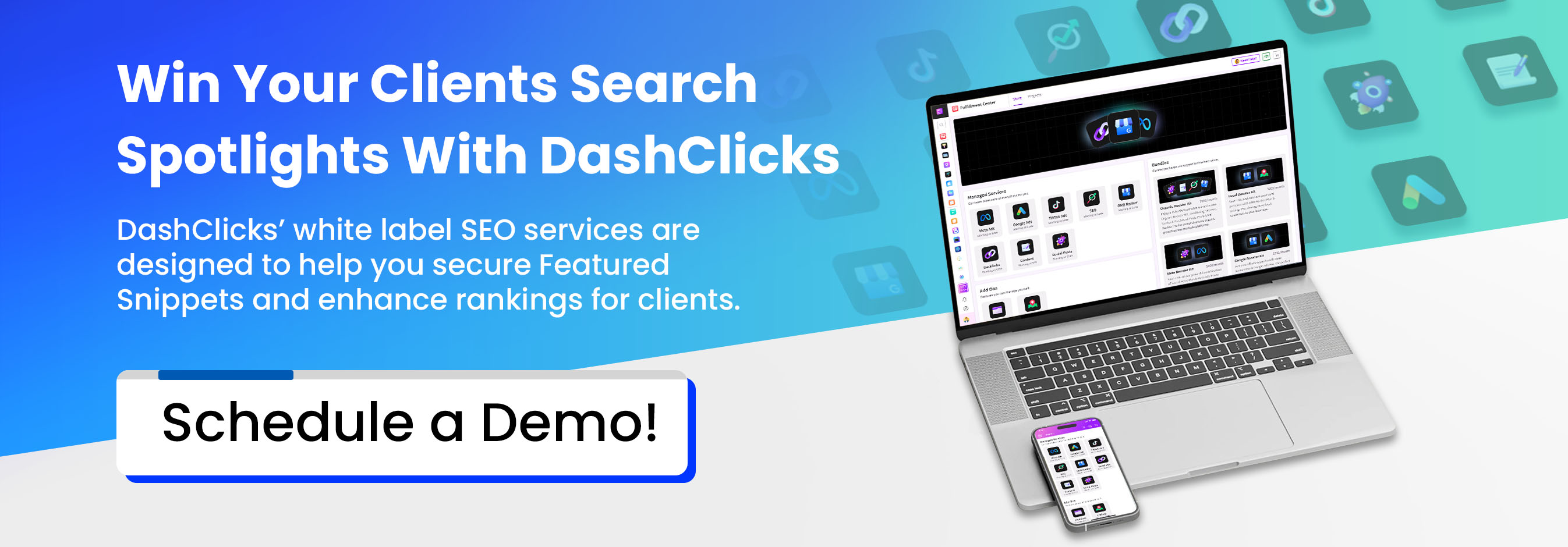


.svg)

.svg)
.svg)
.svg)
.svg)
.svg)
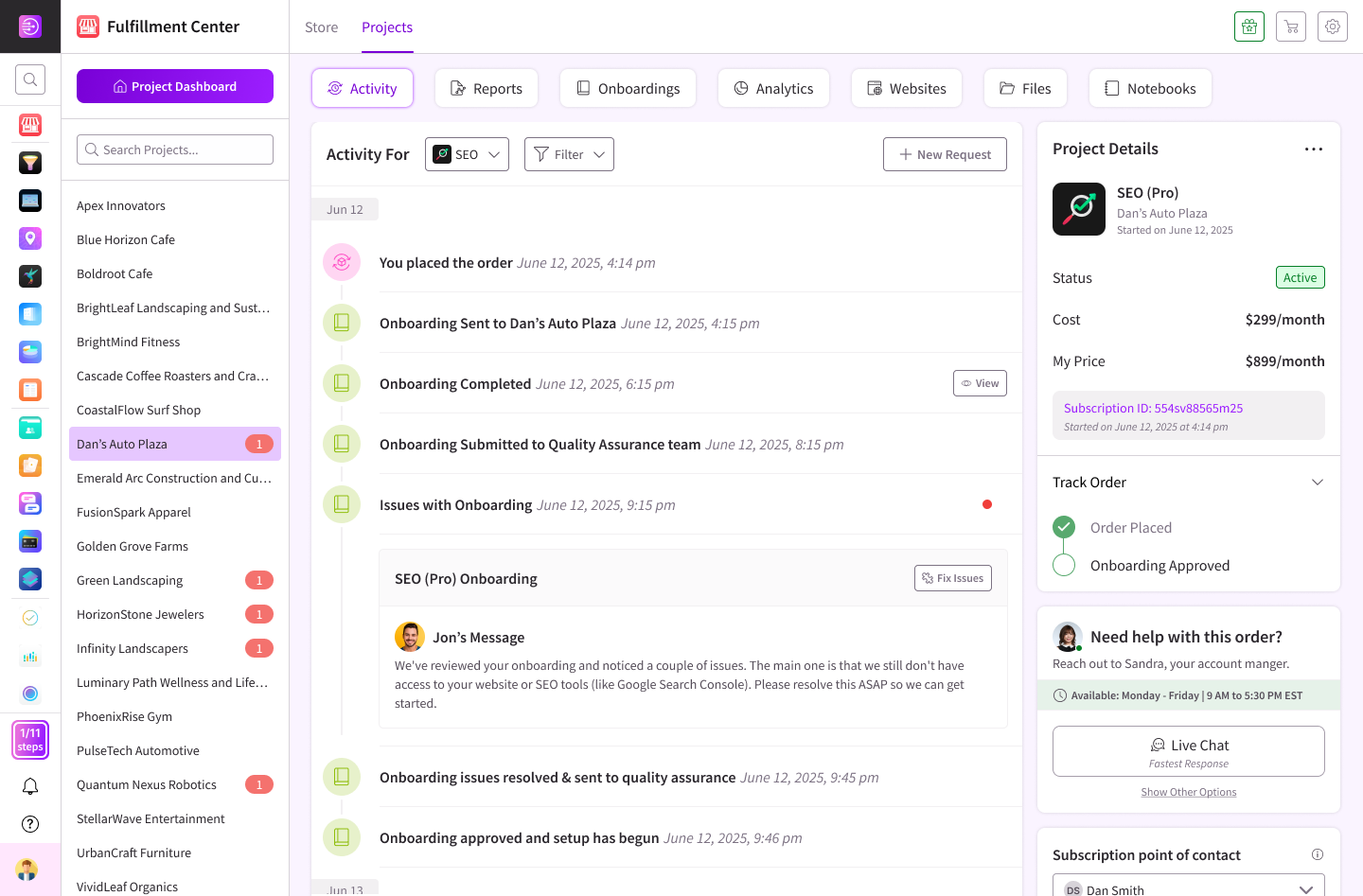
.svg)




.svg)
.svg)
.svg)
.svg)
.svg)